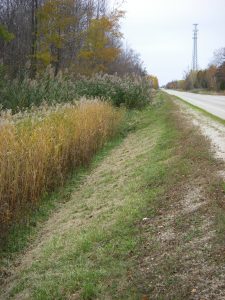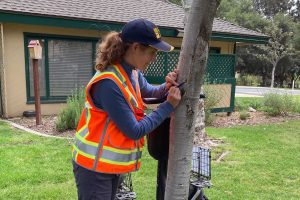this blog post was originally published on PlayCleanGo.org
Established invasive species populations take time and money to control and are an eyesore that can alter migration routes, increase fine fuels for fires, and choke out native vegetation. It would make sense to assume that the most established infestation of invasive species would be public enemy number one, but it’s not. For widespread infestations, suppression and education are key to inch towards control. New invasive species should be at the top of every invasive species manager’s priority list.
Is garlic mustard present in the county? If the answer is no, prevention and early detection and rapid response programs will keep that invader out. If a plant like common teasel is in the neighboring county and there is one colony of plants at the border of the county that infestation can easily be squashed.
It may be a daunting task for a recreationist to learn about neighboring states’ invasive species, but it is easier than it sounds. Each state has a list that is subject to some variation and a quick internet search will bring up those species that are decried noxious just across the state line. In addition to neighboring state lists, your state, county, or providence may have a watch list. Depending on the rule making, the watch list may be slated for eradication or further research. In any event, report new infestations to your local invasive species management agency. If you think you have seen Japanese climbing fern, or have collected a gypsy moth in a jar and bring it to your local manager, they will thank you for it. Even if you bring in a native plant or introduced but noninvasive, your diligence will be appreciated.
Many local agencies offer seminars, trainings, and workshops to help identify invasive species and management practices. Read your newspaper or check online to find out when these programs are offered. If you can’t find any, reach out to an agency and suggest that they offer one-or visit the PlayCleanGo website for short videos and tips to help you clean off ATVs, bikes, or boots.
The PlayCleanGo Watch Out! cards are an excellent resource to help you identify potential threats and what you need to clean off of your gear. When managing invasives, education is the key component and the more you know, the more you can do your part.
Whether or not you recreate outdoors or work outdoors, the PlayCleanGo dogma is easily transferable onto the job duties by utilizing Work.Clean.Go. Roadsides are a major vector for the spread of invasive species and after reshaping a road shoulder, the first things to pop up are weeds. Cleaning equipment is a vital task in order to prevent weeds from being spread miles and miles along public roadways that connect residential areas. Roads and rivers are excellent vectors for invasive species to cross multistate boundaries and introduce foreign species to new environments.
By meshing PlayCleanGo with Work.Clean.Go., we can prevent the spread of invasive species while making money, and spending money.

Written by Ethan Proud
Ethan is the Archuleta County Weed and Pest Supervisor in Pagosa Springs, Colorado. He is the Land Management Organizations representative on the PlayCleanGo National Advisory Council and serves on the Colorado Weed Managers Association’s education committee. He spends most of his free time outdoors, and finds it much more relaxing when he can enjoy the native ecosystems without seeing raging infestations of noxious weeds.




